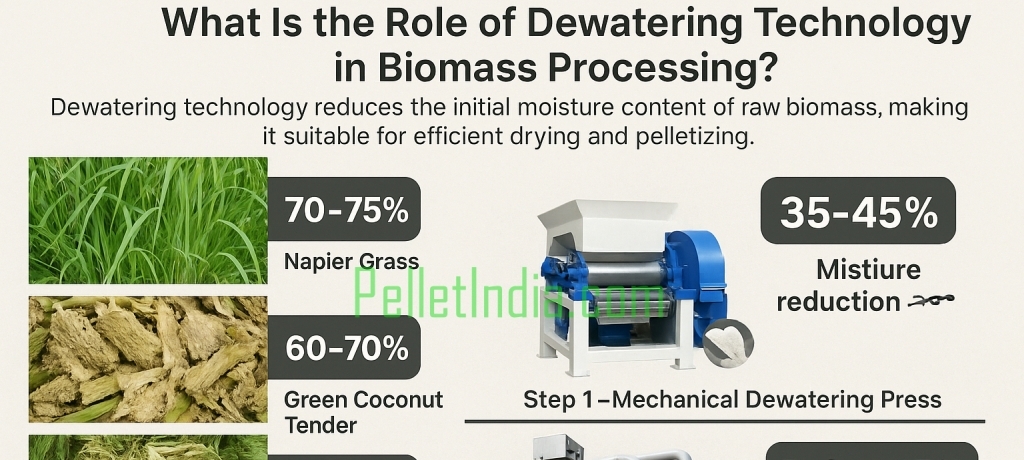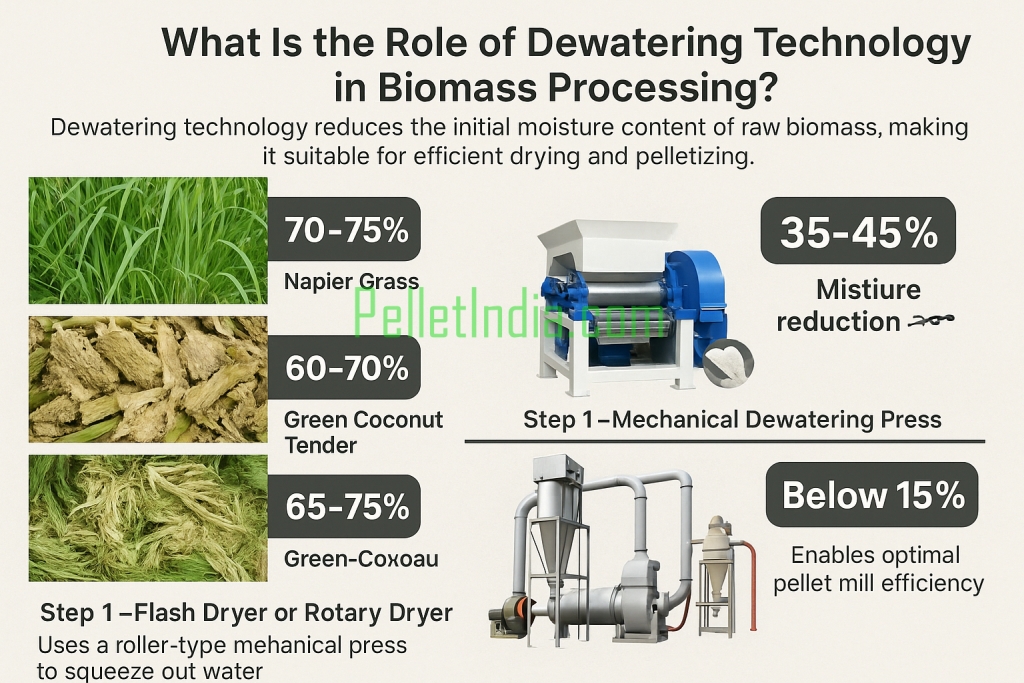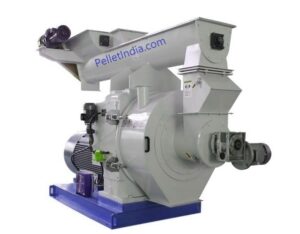
Dewatering technology plays a crucial role in the biomass pellet-making process by reducing the initial moisture content of raw biomass materials, making them suitable for efficient drying and pelletizing.
Many high-moisture raw materials—such as Napier Grass, sugarcane bagasse, and green coconut husk—contain 65% to 75% moisture, which is too high for direct pellet production. To achieve quality and durability in the final pellets, the moisture must be reduced to:
1. Initial Moisture Content (Raw Material):
2. Step 1 – Mechanical Dewatering Press:
3. Step 2 – Flash Dryer or Rotary Dryer:

PelletIndia.com, a division of Servoday Plants & Equipments Limited, delivers advanced dewatering and drying solutions specifically engineered for biomass materials.
We offer:
Our systems:
India is poised to be a global leader in green energy. With Napier Grass offering 150–200 tons/acre/year yield, it’s a sustainable feedstock for:
Its adaptability, fast regrowth, and multiple revenue streams make Napier Grass a cornerstone crop in India’s green economy and carbon reduction goals.



📞 Contact Us for Biomass Solutions
📍 Servoday Plants & Equipments Ltd
📞 +91 9427210483 | +91 9427210484
📧 [email protected]
🌐 www.PelletIndia.com
👤 Contact Person: Sanjay Masuria
📲 WhatsApp: +91 9427210483
From Concept to Commissioning. We are with You.
Our policy is simple and transparent:
No undersized parts, no fraud, no fake components—genuinely serving since 1969. 🚀🔥
Moisture reduction values vary based on raw material, ambient environment, and system configuration. For best results, consult with our engineers at PelletIndia.